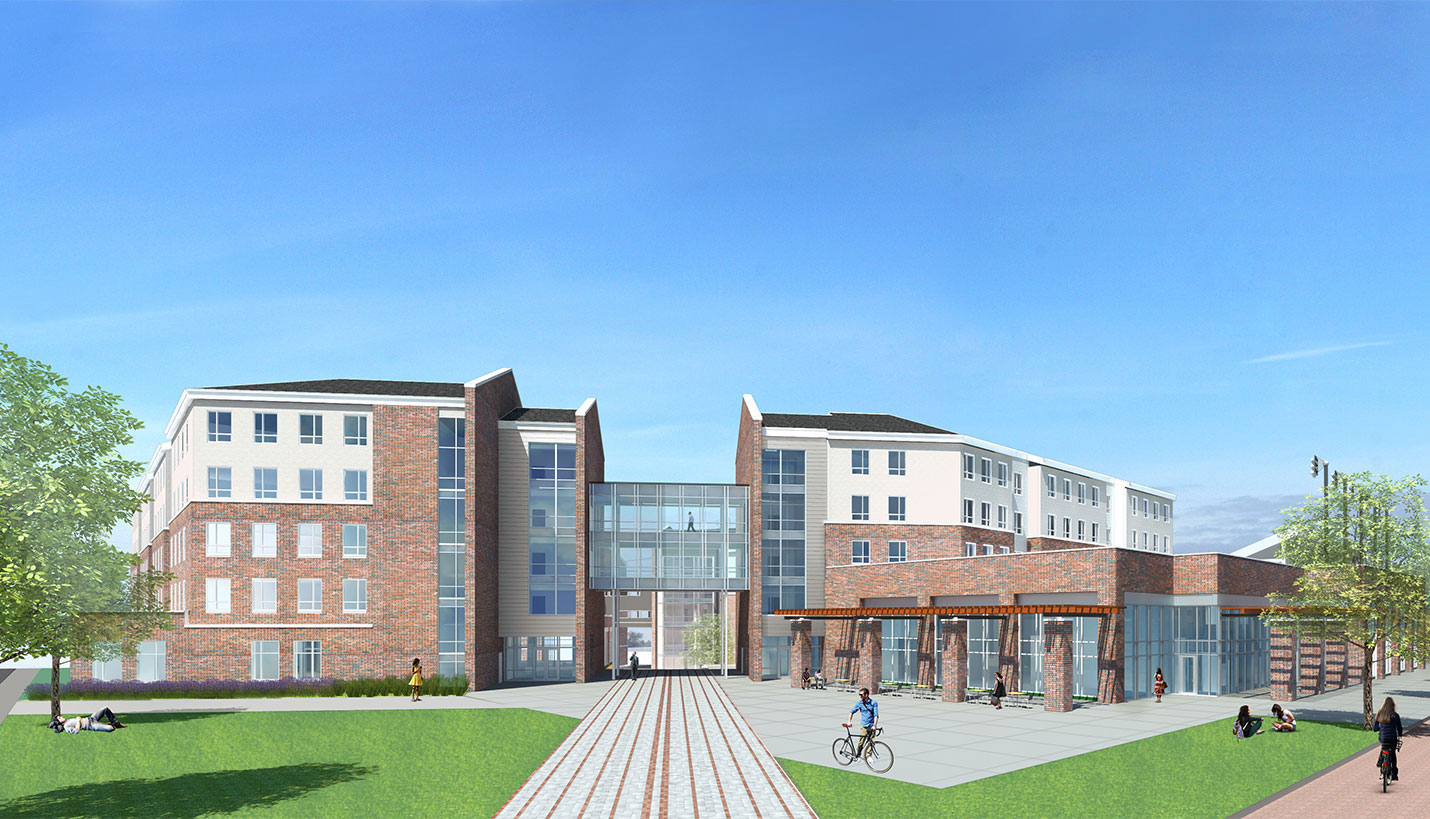

Page Brings Architectural Expertise to Wichita State University
An example of how Page’s culture and the firm’s values influence our work is the newly designed Wichita State University Housing and Dining Project, a case study on how Page provides vision and leadership in the architectural design process.
Regarding the Georgian Architecture of the new residence and dining hall project at WSU, our natural instinct, aesthetic preference, and philosophical stance is toward modern architectural design. Listening to the client, and understanding their campus aesthetic, we realized that in this case the act of designing a building on a college campus is not always about the “signature” building. Sometimes it is about reinforcing the college vernacular, building on the fabric of the context, and drawing from the campus architecture.
At WSU, the original buildings were built in the late 1890’s in a collegiate Georgian style. Subsequent buildings were decreasingly supportive of the original core campus, trending toward modernism and the architecture of the day. Our approach was to break down the Georgian style in an academic way, and reassemble it in a modern building, within the constraints of our project’s budget and schedule. The result is a functionally designed building which is connected to its place in terms of its materials, proportions, and detailing which give it an appropriate residential character, without becoming simply a revival of Georgian Architecture.
This process was the result of careful study of the context, research into Georgian Architecture, and working interactively with our clients to produce a practical and aesthetically apprioriate building which met their needs and resonated with their understanding of their campus. We exerted our expertise at key points in the process, to keep it on track without being patronizing. We strove to facilitate meetings and workshops, so that optimal design solutions were generated by group interaction. Most often, this was achieved by presenting options, weighing pros and cons, and returning to later meetings with schemes that reflected stakeholder input.
At Page, we provide leadership that can, through critical analysis and an iterative exploration of solutions in a collaborative environment, bring order to complex and contradictory design challenges. We bring order to complex and contradictory design challenges through critical analysis and an iterative exploration of solutions in a collaborative environment. Careers spent working with the built environment have trained our collective intuition, so that a generative design impulse is instinctive, not forced. We are experts in abstract thinking, and constant students of the process of architectural and engineering design. We intuitively see connections, patterns, order, and grace in complex, three-dimensional problems. Our culture breaks creative complacency, as we use a process that shifts accepted awareness to produce results that challenge conventional wisdom and exceed expectations.
Contributed By
Charles Schmidt
08/02/2013
Related Posts
- Trends In Student Housing Programming, Design
- Raising The Bar: UCCS Village at Alpine Valley
- Dining Facility Gets Gold Star
- University Residence Halls Achieve LEED Gold
- 2400 Nueces Wins Green Award
- Social Studies: Enhancing Student Lives
- Building High-End Student Housing May Have Huge Social Repercussion








